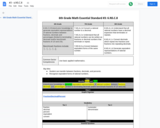
Student can transfer between fractions, decimals, and percents.
Recognize equivalent forms of rational numbers.
- Subject:
- Mathematics
- Material Type:
- Activity/Lab
- Author:
- Liberty Public Schools
- Date Added:
- 04/09/2021

Student can transfer between fractions, decimals, and percents.
Recognize equivalent forms of rational numbers.
![Evolution of Tusklessness in African Elephants [version 1.0]](https://oercommons.org/static/newdesign/images/materials/default-thumbnail-index.png)
The exploitation of African elephants in the form of ivory poaching is exacerbated by warfare. The affects of this anthropogenic evolutionary force on the African savanna elephant (Loxodonta africana) in the Gorongoas National Park in Mozambique was investigated (Campbell-Staton, et. al. 2021) after the Mozambican civil war (1997-1992). This multipart lesson is based on this research. Here, we explore allele frequencies, phenotypic data, and the use of a chi-squared test to determine if the population is in Hardy-Weinberg Equilibrium. Because one gene influencing tusklessness is X-linked, we also explore inheritance of the trait, using hemophilia as an example. The data used in this part of the lesson are simulated data based on reports from Zambia.
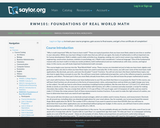
In this course, you will cover some of the most basic math applications, like decimals, percents, and even fractions. You will not only learn the theory behind these topics, but also how to apply these concepts to your life. You will learn some basic mathematical properties, such as the reflexive property, associative property, and others. The best part is that you most likely already know them, even if you did not know the proper mathematical terminology.

An explanation of the equations for percents. Emphasizes the importance of the base.
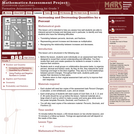
This lesson unit is intended to help teachers assess how well students are able to interpret percent increase and decrease, and in particular, to identify and help students who have the following difficulties: translating between percents, decimals, and fractions; representing percent increase and decrease as multiplication; and recognizing the relationship between increases and decreases.
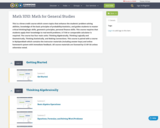
This is a three-credit course which covers topics that enhance the students’ problem solving abilities, knowledge of the basic principles of probability/statistics, and guides students to master critical thinking/logic skills, geometric principles, personal finance skills. This course requires that students apply their knowledge to real-world problems. A TI-84 or comparable calculator is required. The course has four main units: Thinking Algebraically, Thinking Logically and Geometrically, Thinking Statistically, and Making Connections. This course is paired with a course in MyOpenMath which contains the instructor materials (including answer keys) and online homework system with immediate feedback. All course materials are licensed by CC-BY-SA unless otherwise noted.
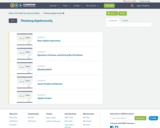
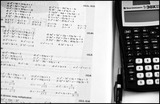
Basic Algebra Operations Notes:Place Value and RoundingIntegers and DecimalsFractions, Decimals, and PercentsFractionsProportionsExponentsAlgebraic Expressions

Topics List for this Lesson: Percents, Sales Tax, and DiscountsIncome TaxSimple and Compound InterestAnnuities, Methods of Saving, and InvestingHome Ownership
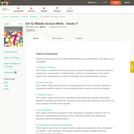
A work in progress, CK-12's Math 7 explores foundational math concepts that will prepare students for Algebra and more advanced subjects. Material includes decimals, fractions, exponents, integers, percents, inequalities, and some basic geometry.
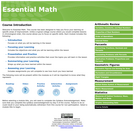
This course has been designed to help students focus learning on specific areas of improvement. Unlike a typical college course where you would complete lessons in chronological order, this course allows you to focus on specific skills. Modules include: Arithmetic Review, Percents, Geometric Figures, Measurement, and Statistics